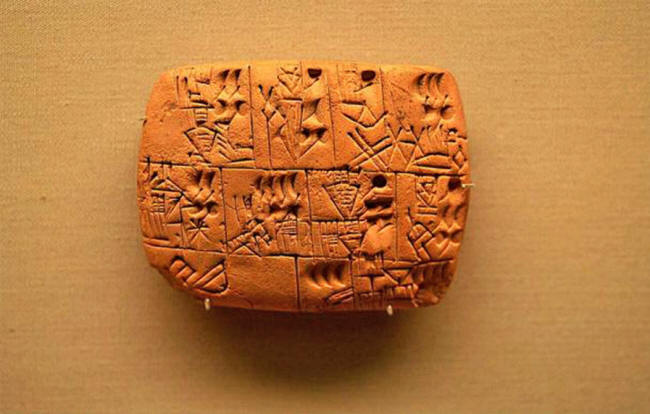|
from Ancient-Origins Website
Queen Ku-Baba relief in the form of a goddess.
Source: Left; Public Domain Right; CC BY-SA 2.0 FR
But have you ever heard of Queen Ku-Baba...?
Reigning over Sumer around 2,500 BC, she might just be the first recorded female ruler in ancient history. Queen Ku-Baba is a captivating figure in Mesopotamian history, believed to have ruled over the city-state of Kish in the third millennium BC.
As one of the earliest
female leaders on record, her story is an important piece of the
puzzle in understanding the role of women in ancient societies.
Left: Ashmolean Museum. ( Public Domain ) Right: The Weld-Blundell Prism, ( Gts-tg / CC BY-SA 4.0 )
The list is exactly what the name suggests - a list of Sumerian kings. It briefly notes the length of each individual reign and the city in which the king reigned.
On this list, she is referred to as 'lugal' or king, not as 'eresh' (queen consort).
From this exhaustive list, hers is the only woman's name to appear on it.
The catch here is that the list is not the most reputed historical source.
It frequently blurs the line between history and legend.
Simultaneously, there is
a possibility that exists that the interpreted concept of time is
different to the system we follow today.
Alongside her name it reads,
Ku-Baba's rise to power in Kish is shrouded in mystery, but there is a general consensus that she was a tavern keeper, which can be interpreted as a barmaid or linked to prostitution, as per ancient Sumerian texts.
The city of Kish was
known for its wealth and power, and it played a significant role in
the development of Mesopotamian civilization.
Tablet in cuneiform from ancient Sumer depict the significance of beer in the economy and society of ancient Mesopotamia.
(Jim Kuhn/ CC BY 2.0 )
There was an ancient
association between female divinity and alcohol, and according to
theologist Carole R. Fontaine, Ku-Baba would have been seen
as a "successful business woman."
This explains her royal
ascent, as she did not marry into, or inherit power from a royal
parent.
Ku-Baba reportedly fed a fisherman, and in exchange, asks him to offer his catch to the temple of Esagil.
Marduk's favor in response comes as no surprise:
Some sources suggest that she was a member of the ruling dynasty of Kish and that she inherited the throne from her father. Others suggest that she was a commoner who rose to power through her own abilities and charisma.
Whatever the case may be,
it is clear that Ku-Baba was a formidable leader who left a lasting
mark on Kish.
Before Ku-Baba, who was the lone member of the Third Dynasty of Kish, the capital was at Mari for over a century, and moved to Akshak after Ku-Baba.
However, Ku-Baba's son
Puzer-Suen and grandson, Ur-Zababa, shifted the capital back to Kish
temporarily.
Facade of Inanna Temple at Uruk, Iraq. Female deity pouring life-giving water from a vessel. (Osama Shukir Muhammed Amin/ CC BY-SA 4.0)
This temple was located
in the heart of Kish and was one of the most important religious
sites in the region. Ku-Baba is believed to have been a devout
worshipper of Inanna, and the temple was a reflection of her
religious beliefs and values.
She is said to have expanded the territory of Kish through a series of military campaigns, which helped to establish Kish as a major power in the region.
Ku-Baba's military
prowess was a significant factor in her reign, and it helped to
ensure her continued dominance over Kish.
Despite some dodgy historical inaccuracies, it is clear that Ku-Baba's very ascent to the throne is nothing short of legendary.
This in itself openly challenged the political hegemony of man as the king, as Ku-Baba took upon a man's duties with ease and outdid herself in that regard.
In the millennium after her death, Ku-Baba was deified and worshipped as a Neo-Hittite goddess, and supposed local reincarnations of her seized power in the decentralizing empires of the Levant belt.
This in itself is a clear indication of her power and influence...
|





